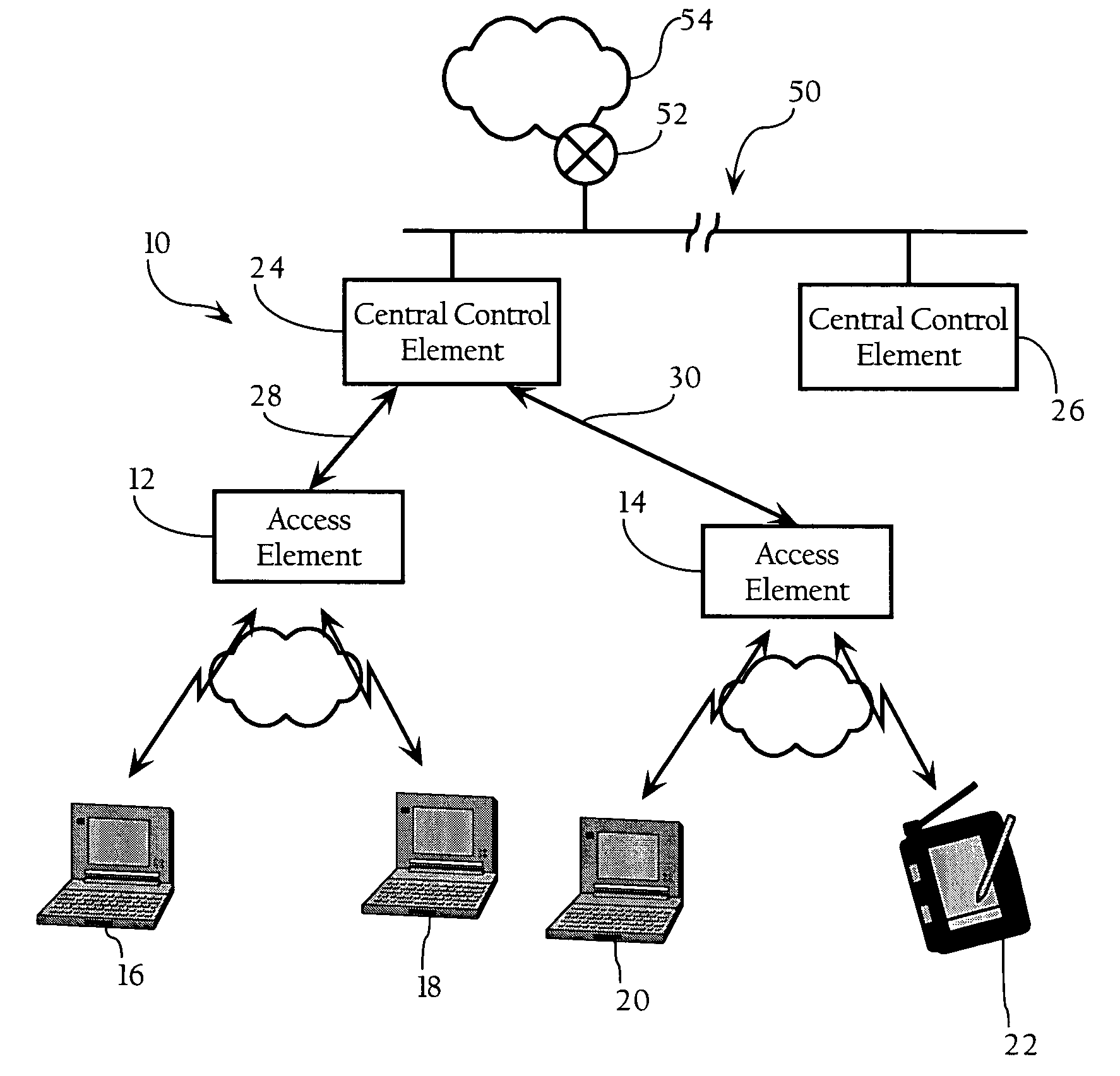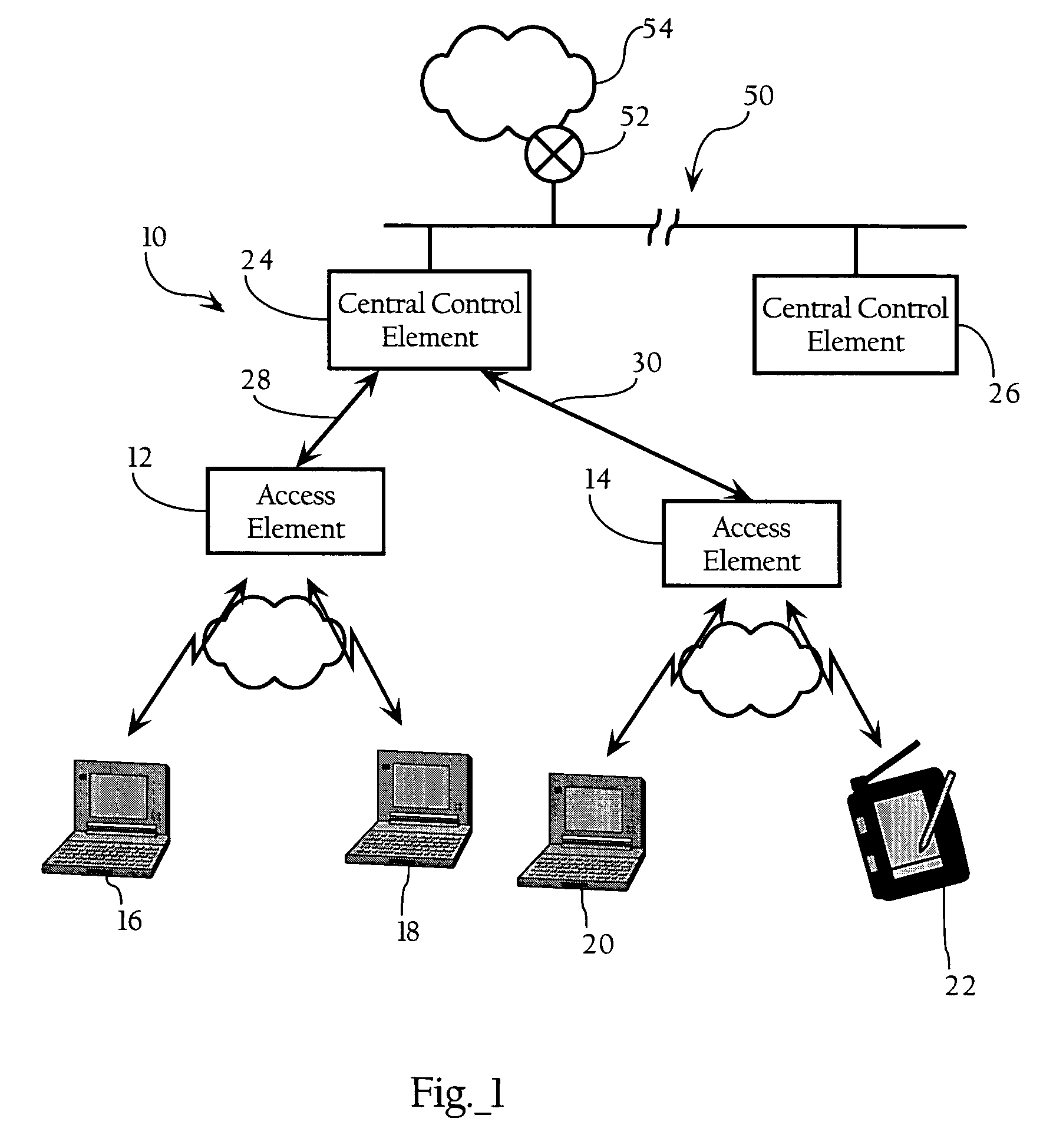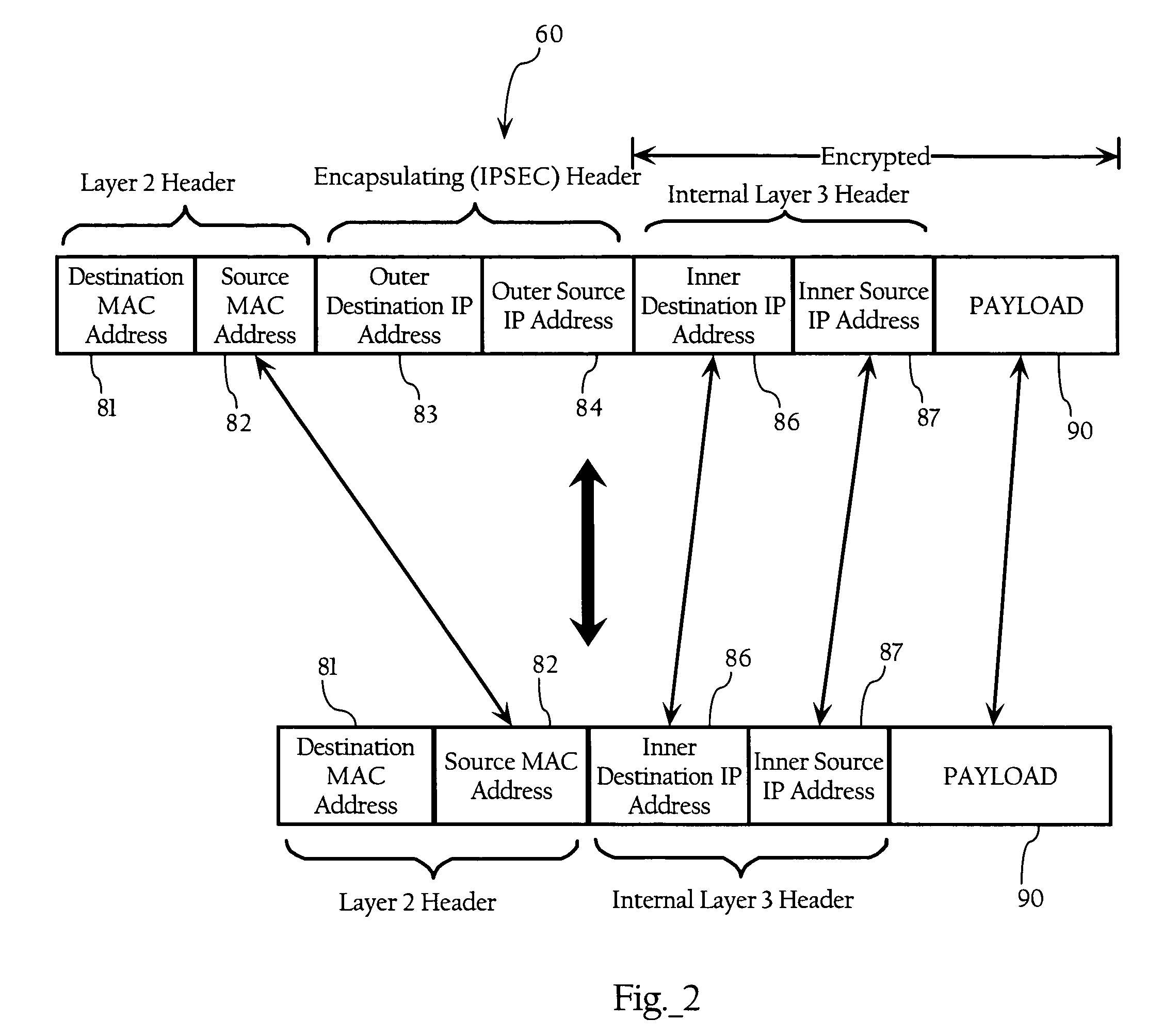Wireless network security mechanism including reverse network address translation
a reverse network address and wireless network technology, applied in the field of wireless computer networks, can solve the problems of reducing network security, difficult to read intercepted wireless frames data, and security risks of wireless networks
- Summary
- Abstract
- Description
- Claims
- Application Information
AI Technical Summary
Benefits of technology
Problems solved by technology
Method used
Image
Examples
Embodiment Construction
[0023]For didactic purposes an embodiment of the present invention is described as operating in a WLAN environment as disclosed in U.S. application Ser. Nos. 10 / 155,938 and 10 / 407,357 incorporated by reference herein. As discussed below, however, the present invention can be implemented according to a vast array of embodiments, and can be applied to a variety of WLAN architectures.
[0024]FIG. 1 illustrates a wireless computer network environment according to an embodiment of the present invention. Referring to FIG. 1, there is shown a block diagram of a wireless Local Area Network system 10 according to an embodiment of the invention. A specific embodiment of the invention includes the following elements: access elements 12, 14 for wireless communication with selected client remote elements (or mobile stations) 16, 18, 20, 22, central control elements 24, 26, and means for communication between the access elements and the central control elements, such as dire...
PUM
 Login to View More
Login to View More Abstract
Description
Claims
Application Information
 Login to View More
Login to View More - R&D
- Intellectual Property
- Life Sciences
- Materials
- Tech Scout
- Unparalleled Data Quality
- Higher Quality Content
- 60% Fewer Hallucinations
Browse by: Latest US Patents, China's latest patents, Technical Efficacy Thesaurus, Application Domain, Technology Topic, Popular Technical Reports.
© 2025 PatSnap. All rights reserved.Legal|Privacy policy|Modern Slavery Act Transparency Statement|Sitemap|About US| Contact US: help@patsnap.com



